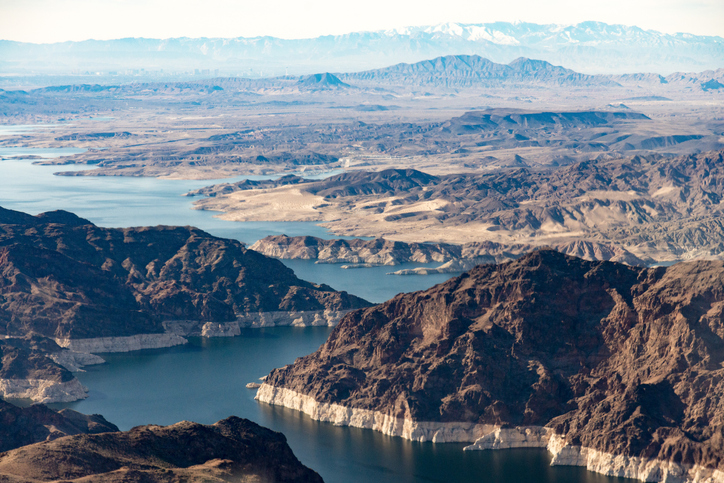10 Past and Recent Facts About The Colorado River
Whether you live right around the bend or you’re traveling a great distance to enjoy the breathtaking beauty of the Colorado River, chances are you already know a fact or two about this great river.
However, there’s still so much more to learn and understand. Facts about the mighty Colorado River are as long as the river itself. Before you come out to enjoy the sun, water, and adventure of Lake Mead Mohave Adventures and the rest of the Lake Mead National Recreation Area, here are ten interesting past and recent facts about the Colorado River.
1. Depth of the River
The average depth of the river is 20 feet. While in places it gets as shallow as six feet, there are also places around the river with a depth of over 90 feet.
2. Sea of Cortez
At one point in time, the Colorado River did flow directly into the Sea of Cortez. Also known as the Gulf of California, the water made its way down through Arizona into Mexico and out to the sea. Now, however, due to significant damming as well as lower water levels due to drought, the river now barely makes it to Mexico, and it no longer reaches the Sea of Cortez.
3. States of the Colorado River
The Colorado River flows through seven states in the United States. It starts in the Rocky Mountains of Colorado, then flows through Wyoming, Utah, New Mexico, Nevada, Arizona, and California. The Colorado River is even the bisecting border between the United States and Mexico for 17 miles.
4. The Dam River
The Colorado River has more dams than any other river in the United States. In total, there are 15 dams on the Colorado River, all of which are used to pool water for irrigation and generate electricity.
The dams include Windy Gap Dam, Glen Canyon Dam, Palo Verde Dam, Davis Dam, Granby Dam, Morelos Dam, Shadow Mountain Dam, Headgate Rock Dam, Parker Dam, Imperial Dam, Hoover Dam, Grand Valley Diversion Dam, Price-Stubb Dam, and the Laguna Diversion Dam.
5. That’s Some Dam Power
Six of the 15 Colorado River dams are specifically designed for irrigation and do not generate electricity. However, the other nine dams generate just under 9 million kilowatt-hours worth of power every year. Almost 4 million of this is from the Hoover Dam, with the Glen River Dam just behind it at nearly 3.5 million kilowatt hours.
6. Early Dams
The Hoover Dam, which is responsible for the creation of Lake Mead, is the best known and largest of the dams on the Colorado River. Yet, it was not the first dam constructed on the river.
In fact, there were three dams constructed long before construction ever started on the Hoover Dam. The Grand Valley Diversion Dam, designed for irrigation in Colorado, was constructed in 1916, while the Price-Stubb Dam was also built in Colorado and for irrigation back in 1911. However, the very first dam was the Laguna Diversion Dam, built along the Arizona and Colorado border. It was constructed for diversion purposes and completed in 1905.
The last Colorado River dam was the Windy Gap Dam in Colorado. It was completed in 1970.
7. London Bridges Falling Down
When Parker Dam was built back in 1938, it created Lake Havasu. By 1964, Robert McCulloch had purchased much of the land and wanted to build a community around the lake. To do so, he wanted a tourist attraction nobody could turn down, so McCulloch purchased the London Bridge.
Two years prior, the city of London realized its current bridge could no longer support the weight of passing auto traffic, something for which it was not originally designed to do. Robert McCulloch bought it off the city’s hands for $2.46 million. The bridge was then dismantled and reassembled, brick-by-brick, above the lake in the Arizona city.
The bridge is still in Lake Havasu and visitors can walk the bridge, as well as photograph themselves in one of the famous red London phone booths. The city has also become a popular spring break destination for both Arizona and California citizens.
8. Drying Up
While the Colorado River is still mighty, it’s not what it once was. After numerous geological surveys were performed, it was determined that the river had lost around 20 percent of its size over the last century.
About half of the water lost is attributed to rising temperatures. The other 50 percent is due to a number of issues, ranging from mis-management of the water to over-damming the river (a century ago only three of the 15 currently constructed dams were in existence).
To help reduce the continued impact, many states are setting out water conservation requirements. Both California and Arizona areas receiving water from the Colorado River have enacted policies to help reduce the continued impact on the river. However, further assistance is likely necessary in order to avoid additional regions from drying up and continued water shortage.
9. Larger Siblings
While the Colorado River is one of the largest rivers in the United States, it is relatively small when compared to other rivers around the world. In fact, based on length, the Colorado river is the 46th longest river in the world.
10. Lake Mead
The construction of the Hoover Dam created Lake Mead. This development made the lake an instant attraction for people throughout the region. It’s just 24 miles east of Las Vegas, providing visitors to Sin City with an entirely different experience.
Lake Mead is 112 miles in length, and it is 532 feet at its greatest depth. If you are interested in taking advantage of everything the lake has to offer, it is recommended to invest in the America the Beautiful National Parks Pass. This will give you access to not only Lake Mead (for as many days as you like during a calendar year), but any other national park, forest, and most other points of interest.
These are just a handful of the most interesting facts about the Colorado River. But the best way to experience its natural beauty and the life-giving properties it offers to communities throughout the United States is to come out for a visit. From renting a houseboat at Cottonwood Cove Resort & Marina to taking a load off at Echo Bay RV Village, there’s something for everyone at one of the many Lake Mead Mohave Adventure properties. Just bring yourself. Lake Mead and the Colorado River will provide the adventure.



